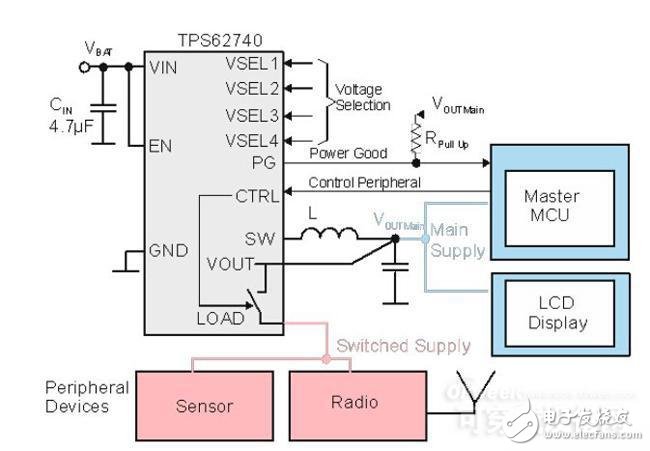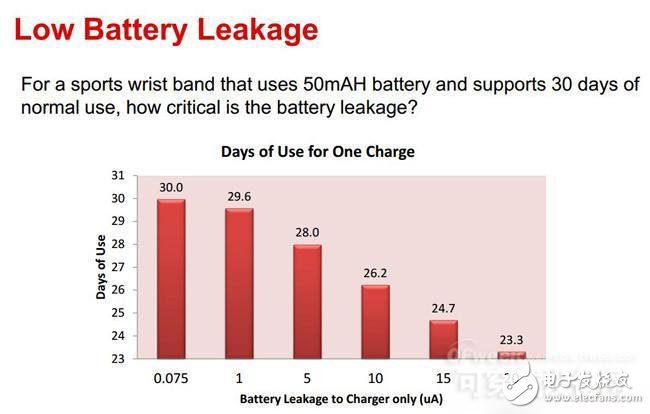Wearable devices have always been screaming and selling, except for the pain points of users in the experience. In fact, they have not broken through the technical defects, and the problem of endurance has been criticized by people. Experts revealed that in the short term, it is difficult for the industry to find a perfect solution to meet the power supply design requirements of wearable devices. At present, it is basically at the stage of exploration, but there are also a few people who may have explored some doorways.
Power supply design requirements for wearable devices
Dr. Wen Sihua first introduced us to the key factors that need to be paid attention to in the design of power supply for wearable devices. He said that the current mainstream wearable device batteries are mainly divided into two types. One is to use high-capacity and high-density disposable lithium batteries, which require users to change frequently, but it can save the manufacturer a lot of cost; The other is the more popular rechargeable battery, which is much smaller in capacity than the disposable battery, but in general the battery capacity of the wearable device generally does not exceed 300 mAh.
On the other hand, since wearable devices are often turned on, but many functions do not need to be turned on for a long time, and modules such as radio and EEPROM do not need to be powered frequently, how to use an effective battery management solution to achieve flexibility. The goal of achieving maximum efficiency and extending battery life is the key factor in the final realization of product endurance. Dr. Wen said that TI has introduced a battery management solution based on the ultra-low Iq step-down converter TPS62740 ($2.5067), which can meet the above-mentioned design requirements for flexibility.

Figure 1: TI's battery management solution based on TPS62740 ($2.5067)
In the speech, Dr. Wen also mentioned that wearable devices have small requirements on the size of battery modules, and the requirements for battery accuracy are increasing. How to achieve a small charge termination current is also one of the difficult problems to be overcome. “Based on the need for smaller size and charge termination currents, TI has introduced a lithium-ion battery charger tailored for low-power applications such as wearables: Bq25100.†Dr. Wen introduced us, the Bq25100 uses 0.9 & TImes; The 1.6mm WCSP package supports a charger solution that is only half the size of the previous generation; the Bq25100 can accurately control fast charging currents as low as 10mA or up to 250mA, while also enabling termination of charge as low as 1mA, thus supporting Miniature lithium ion button battery. In addition, the Bq25100 also supports leakage currents of less than 75nA, which can solve the problem of battery loss caused by leakage current and prolong battery life.

Figure 2: TI's Bq25100 based small size charger solution

Figure 3: Comparison of battery life results from different leakage currents
Different from the traditional battery charging scheme
In addition to the most traditional USB power supply, Dr. Wen also provided us with two new ideas. One is the current wireless charging solution, and the other is the controversial energy harvesting solution.
Energy (Energy ($50.4000) Harvesting) technology, which makes full use of the surrounding energy and effectively converts it into energy that can be stored and collected. The key is energy efficiency and the amount of energy that can be collected, but for now, this technology also There are great challenges. For example, if additional components are added, a small amount of energy collected in an hour may be consumed in less than one second of work, so whether or not to add components for energy harvesting is still controversial.
Fortunately, wireless charging does not have such a big technical obstacle. There are many feasible solutions on the market. At present, TI has also introduced a wireless charging solution for wearable devices. On the receiving module of the solution, We can see that in addition to the above mentioned buck converter Bq25100, a Qi-based wireless charging receiver, BQ51003 ($1.4625), has been added.

Figure 4: TI's wearable device wireless charging solution (receiver module)
DITUO New Released USB Essential Oil Car Diffuser is 100% PP material. It is the easiest way to maintain a fresh, moisture and odor free environment in your car. USB powered, plug in your car, Car Diffuser is portable to be taken anywhere and fits perfectly to any vehicle cup holder. Two working modes, continuous mist mode and intermittent mist mode. Beautiful 7 colors mood light to relieve tiredness while driving. You have the option of just using the Usb Car Diffuser without the light. It automatically turns off when the water is below the low-water line to ensure a longer working life instead of breaking easily.
The USB power source makes this a very versatile diffuser - it can be used anywhere there`s a USB port. You can plug it into your computer in your office. We even took it into a hotel room and used the USB port that was on the lamp. It made for a sturdy, compact travel Usb Diffuser (not just for the car).
Car Diffuser
Essential Oil Car Diffuser,Car Diffuser,Car Aroma Diffuser,Usb Car Diffuser
Shenzhen Dituo Electronic Co.,Ltd. , https://www.sz-dituo.com